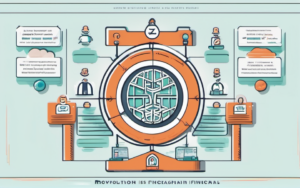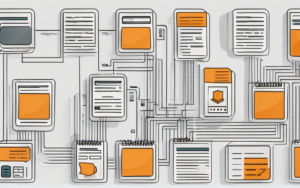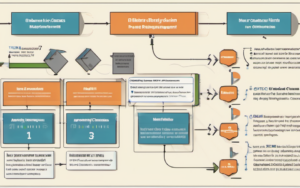Blockchain technology is rapidly emerging as a powerful tool with the potential to revolutionize various sectors and address some of the world’s most pressing challenges. Its decentralized and transparent nature offers unique solutions to problems that traditional systems struggle to overcome. This transformative potential makes understanding its applications crucial for shaping a more sustainable and equitable future.
1. Introduction
1.1 The Potential of Blockchain
Blockchain’s decentralized ledger technology offers unparalleled transparency and security. Unlike centralized databases, which are vulnerable to manipulation and single points of failure, blockchain distributes data across a network of computers, making it virtually tamper-proof. This inherent security is what makes it so attractive for applications requiring trust and accountability. Its immutability ensures that once data is recorded, it cannot be altered or erased, creating an auditable trail for various processes. This trustless system is transforming industries and offering solutions to global issues previously deemed insurmountable.
1.2 Global Challenges Addressed
The potential applications of blockchain technology are vast and varied. From improving supply chain transparency and efficiency to enhancing healthcare data security and promoting financial inclusion, its impact is already being felt across the globe. Furthermore, its use in combating climate change, using blockchain for sustainable development goals, and addressing food insecurity represents a significant step towards a more sustainable and equitable world. This innovative technology offers a unique opportunity to tackle complex global challenges that demand transparency, accountability, and trust.
2. Enhancing Supply Chain Transparency and Efficiency
2.1 Tracking Goods from Origin to Consumer
Blockchain applications for supply chain transparency are revolutionizing how goods are tracked. Every stage of the journey, from raw material sourcing to manufacturing and final delivery, can be recorded on a shared, immutable ledger. This provides complete traceability, enabling businesses and consumers to verify the authenticity and origin of products, combating issues like counterfeiting and ensuring ethical sourcing. For instance, companies can use blockchain to track the journey of their coffee beans, demonstrating fair trade practices and environmental sustainability.
2.2 Reducing Counterfeiting and Fraud
Counterfeit goods represent a significant problem globally, causing economic losses and posing safety risks. Blockchain technology can mitigate this by providing a secure and transparent system for verifying the authenticity of products. Each item can be assigned a unique digital identity on the blockchain, making it easy to distinguish genuine products from fakes. This enhanced traceability helps brands protect their reputation and consumers from purchasing substandard or potentially dangerous products.
2.3 Improving Food Safety and Traceability
The food industry is benefiting significantly from blockchain’s ability to improve food safety and traceability. By tracking food products throughout their entire journey, from farm to table, blockchain can help identify the source of contamination in the event of an outbreak. This rapid tracing capability helps minimize the impact of foodborne illnesses and prevents widespread recalls. This directly addresses concerns related to blockchain’s role in combating food insecurity by enhancing food safety and supply chain management.
3. Empowering Healthcare with Secure Data Management
3.1 Protecting Patient Privacy and Data Security
Healthcare data is highly sensitive, requiring robust security measures to protect patient privacy. Blockchain technology offers a secure and decentralized platform for storing and managing health records, providing patients with greater control over their data. By using cryptographic techniques, blockchain ensures that patient information is encrypted and only accessible to authorized individuals. This addresses growing concerns about data breaches and unauthorized access to sensitive medical information.
3.2 Streamlining Healthcare Processes
Blockchain can streamline various healthcare processes, from managing medical records to facilitating insurance claims. By automating data sharing between different healthcare providers, blockchain reduces administrative overhead and improves efficiency. This allows healthcare professionals to focus on patient care rather than paperwork, potentially leading to improved health outcomes and reduced costs. How blockchain improves global healthcare access is largely due to its ability to create more efficient and transparent systems.
3.3 Facilitating Medical Research
Blockchain can facilitate medical research by securely sharing patient data while maintaining privacy. Researchers can access anonymized data for research purposes without compromising individual identities. This helps accelerate medical discoveries and the development of new treatments. The secure and transparent nature of blockchain ensures that research results are reliable and verifiable.
4. Promoting Financial Inclusion and Access
4.1 Expanding Access to Financial Services
Millions of people worldwide lack access to traditional financial services. Blockchain technology, particularly through cryptocurrencies and decentralized finance (DeFi), has the potential to expand financial inclusion by providing access to banking and other financial services to underserved populations. This means individuals without bank accounts can participate in the global financial system, empowering them economically.
4.2 Reducing Transaction Costs
Traditional financial transactions often involve high fees and lengthy processing times. Blockchain technology can reduce these costs and speed up transactions significantly, especially for cross-border payments. This is particularly beneficial for businesses and individuals engaging in international trade or remittances. Lower transaction costs can stimulate economic growth and improve the lives of many.
4.3 Enabling Cross-Border Payments
Blockchain facilitates faster and cheaper cross-border payments, removing the complexities and high costs associated with traditional international transfers. This improves efficiency for businesses and individuals sending and receiving money across borders, accelerating global trade and financial interactions. This efficiency is critical for global commerce and development.
5. Strengthening Voting Systems and Governance
5.1 Enhancing Election Security and Transparency
Blockchain technology can enhance the security and transparency of voting systems. By using a secure and tamper-proof ledger, blockchain can prevent fraud and manipulation, increasing voter confidence in the election process. This creates a more trustworthy and accountable system for electing representatives.
5.2 Improving Data Integrity and Preventing Fraud
The immutability of blockchain makes it incredibly difficult to alter or delete vote records. This significantly reduces the risk of fraud and ensures the integrity of election results. This builds trust and confidence in the electoral process, leading to greater participation and a more representative democracy.
5.3 Increasing Voter Participation
By providing a secure and transparent voting system, blockchain can encourage greater voter participation. Knowing their vote is accurately recorded and cannot be manipulated may motivate more people to participate in the democratic process. This leads to a more representative government that better reflects the will of the people.
6. Addressing Climate Change and Environmental Sustainability
6.1 Tracking Carbon Emissions and Environmental Impact
Blockchain technology can help track carbon emissions and monitor environmental impact across various industries. By recording emissions data on a transparent and immutable ledger, businesses can accurately measure and report their environmental footprint. This data transparency can drive greater accountability and encourage the adoption of sustainable practices. Blockchain technology solutions for climate change are a crucial element in mitigating the effects of global warming.
6.2 Promoting Sustainable Practices
Blockchain can incentivize sustainable practices by rewarding businesses and individuals for environmentally friendly actions. This can be achieved through tokenized rewards or carbon credits recorded on the blockchain, creating a transparent and verifiable system for rewarding sustainability.
6.3 Supporting Green Initiatives
Blockchain can facilitate the financing and implementation of green initiatives. By creating transparent and secure platforms for investment in renewable energy projects or carbon offsetting programs, blockchain can attract more capital and accelerate the transition to a sustainable economy. This supports global efforts in using blockchain for sustainable development goals.
7. Overcoming Challenges and Limitations
7.1 Scalability and Interoperability Issues
While promising, blockchain technology still faces challenges regarding scalability and interoperability. Some blockchains struggle to handle a large volume of transactions, limiting their applicability to certain use cases. Interoperability between different blockchain platforms is also an ongoing concern.
7.2 Regulatory Uncertainty and Legal Frameworks
The lack of clear regulatory frameworks for blockchain technology is a significant hurdle to wider adoption. Uncertainty around legal issues related to data privacy, security, and intellectual property can hinder innovation and investment.
7.3 Energy Consumption and Environmental Concerns
Some blockchain networks, particularly those using proof-of-work consensus mechanisms, have raised concerns about their energy consumption and environmental impact. This is a crucial area that needs attention to ensure the sustainable development of blockchain technology.
The future of blockchain in global problem solving hinges on addressing these limitations. Collaboration between governments, businesses, and researchers is crucial to overcome technical hurdles, develop appropriate regulatory frameworks, and explore more energy-efficient consensus mechanisms. Only through continued innovation and collaboration can we fully unlock the transformative potential of this technology to create a more sustainable, equitable, and secure world.




